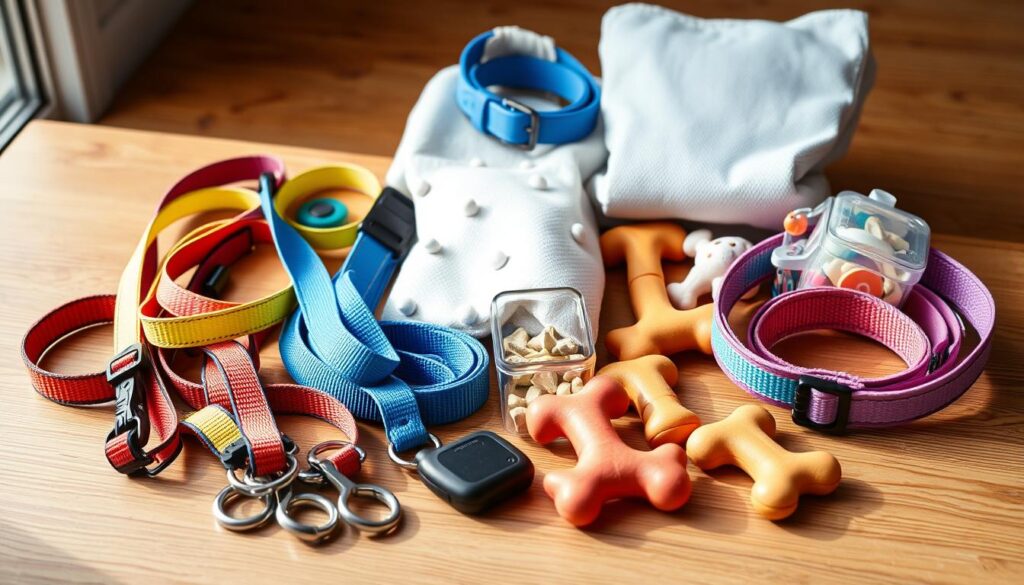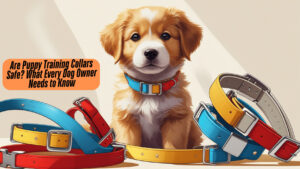Unlocking puppy training success doesn’t have to drain your wallet. With a few budget-friendly accessories and a solid plan, you can teach your puppy essential skills and correct unwanted behaviors without overspending.
The High Cost of Puppyhood: Budget-Friendly Training Solutions
Puppies bring joy, laughter, and a range of expenses. Vet visits, food, grooming, and toys can quickly add up. Thankfully, affordable training solutions exist that won’t compromise the quality of training you provide.
Setting Realistic Expectations: Affordable Doesn’t Mean Ineffective
Many people believe that only expensive items lead to successful training. This isn’t true. An effective puppy training approach can come with simple tools. Staying consistent with these tools is key.
Why Affordable Accessories are Key to Puppy Training Success
Using affordable accessories promotes engagement and makes routine training more manageable. Having the right equipment ensures a positive experience for both you and your puppy. Simple accessories can help establish a solid foundation for lifelong obedience.
Essential Affordable Training Tools: Building Your Puppy Training Kit

Creating a puppy training kit doesn’t require luxury items. Focus on essential accessories that are both effective and cost-efficient. Here are the must-haves:
The Power of the Leash: Types and Uses for Effective Training
A good leash is vital for training. Options include:
- Standard Leash: Great for everyday walks and basic commands.
- Retractable Leash: Offers flexibility, but use with caution.
- Training Leash: Perfect for teaching your pup to heel.
Each leash has its advantages. Choose one that fits your training style and your puppy’s needs.
Harness vs. Collar: Choosing the Right Equipment for Your Pup
When deciding between a harness or collar, consider your puppy’s behavior:
- Collar: Best for well-behaved pups. Works well for identification tags.
- Harness: Ideal for training and controlling stronger dogs. Helps prevent pulling.
Evaluate your puppy’s size and temperament to make the best choice.
Treat Pouch Essentials: Organization and Accessibility for Rewards
Having treats readily available is crucial. A treat pouch:
- Keeps training treats in one place.
- Allows for quick access during training sessions.
- Helps manage your rewards effectively.
Look for pouches that are easy to clip on and have enough space for various treats.
Basic Obedience Training with Affordable Gear: Mastering the Fundamentals
With the right tools, you can teach essential commands effectively.
Sit, Stay, and Come: Building a Foundation with Simple Commands
Start with these fundamental commands. Use a clear voice and hand signals. Keep sessions short, and always reward your puppy for following commands.
- Sit: Hold a treat above your puppy’s nose, then move it back. As your puppy sits, say “sit” and reward them.
- Stay: With your puppy in a sitting position, take a step back while saying “stay.” Give a treat if they remain still.
- Come: Call your puppy using a happy voice, and reward them when they arrive.
Housebreaking Success: Crate Training and Potty Breaks
Crate training can simplify housebreaking. Make the crate a comfortable space. Take your puppy outside frequently and reward them for doing their business outside. This builds positive associations.
Leash Training: Walking Without Pulling
Teach your puppy to walk nicely on a leash. Start by letting them explore while keeping the leash loose. Stop moving if they pull, and only reward them when they walk beside you.
Addressing Common Behavioral Issues: Affordable Solutions for Problem Solving

Even the best-trained puppies face challenges. Here are affordable solutions for common behaviors.
Chewing and Biting: Redirecting Behavior with Affordable Toys
Instead of scolding, redirect your puppy’s energy. Use inexpensive chew toys. Offer them when your puppy starts chewing on furniture or shoes.
Jumping and Nipping: Gentle Correction Techniques
If your puppy jumps or nips, turn away when they do. Ignore them until they calm down, then reward them for being calm. Consistency is crucial in reinforcing this behavior.
Excessive Barking: Understanding and Addressing the Root Cause
Barking can be a sign of boredom or anxiety. Ensure your puppy has enough playtime and mental stimulation. Introducing puzzle toys or daily walks can alleviate excessive barking.
Positive Reinforcement: Making Training Fun and Rewarding
Positive reinforcement is one of the most effective training methods. It encourages good behavior through rewards rather than punishment.
The Importance of Positive Reinforcement in Puppy Training
When you reward your puppy for good behavior, they are more likely to repeat those behaviors. This builds a strong bond between you and your pet, making training enjoyable.
Using Treats Effectively: Types and Timing
Choose small, tasty treats that your puppy loves. Use them immediately after your puppy follows a command for the best effect. You can also rotate different treats to keep your puppy interested.
Praise and Affection: Non-Verbal Rewards
Don’t underestimate the power of praise. A happy tone of voice, petting, and belly rubs can motivate your puppy just as much as treats. Celebrate their progress!
Creating a Consistent Training Environment: Setting Your Puppy Up for Success

Consistency is essential in training. A stable environment helps reinforce learned behaviors.
Establishing a Routine: Predictability and Structure
Dogs thrive on routine. Schedule training sessions at the same time each day. This predictability leads to quicker learning.
Family Involvement: Ensuring Consistent Training Methods
Involve the entire family in training. Everyone should use the same commands and techniques. This consistency avoids confusion for your puppy.
Seeking Professional Help: When to Contact a Trainer
If you struggle with specific issues, don’t hesitate to seek professional guidance. Trainers can offer personalized advice and support.
Conclusion: Your Journey to a Well-Trained Puppy on a Budget
Training your puppy effectively doesn’t have to be expensive. With affordable accessories and consistent techniques, you can achieve great results.
Recap of Key Takeaways: Affordable Training Success
- Invest in essential gear like leashes and treat pouches.
- Prioritize positive reinforcement.
- Create a consistent training routine.
Long-Term Benefits: Investing in Your Puppy’s Future
Well-trained puppies grow into great companions. Your efforts now will pay off for years to come.
Resources for Further Learning: Websites, Books, and Local Trainers
Look for books on puppy training, visit local pet shops for advice, or explore reputable websites for additional tips. Your puppy’s training journey is just beginning!




